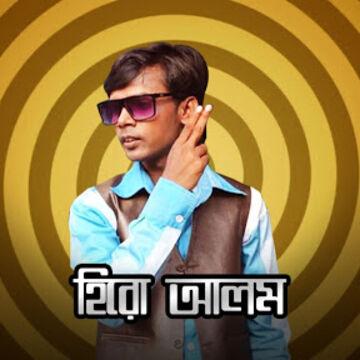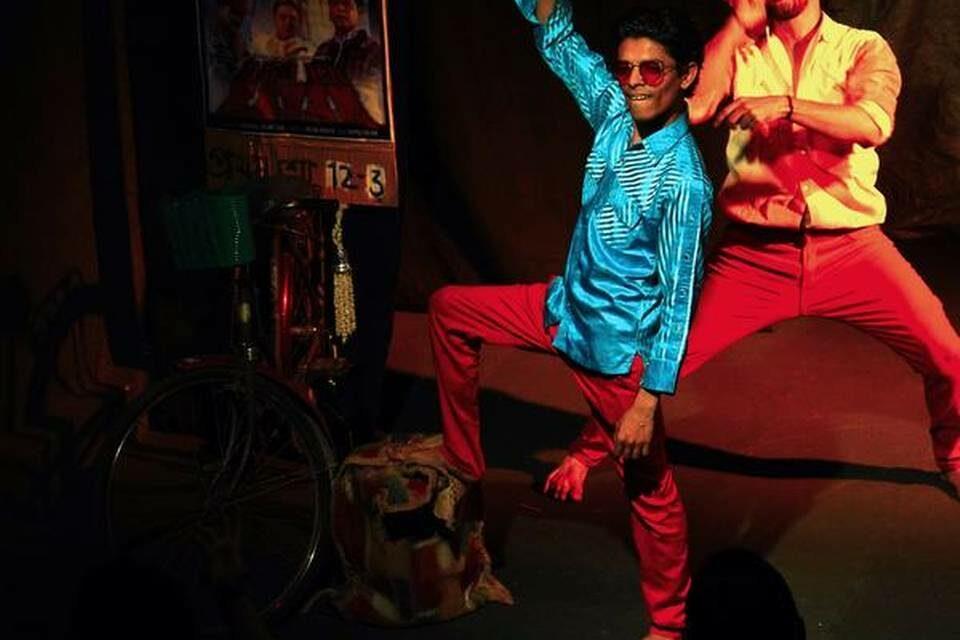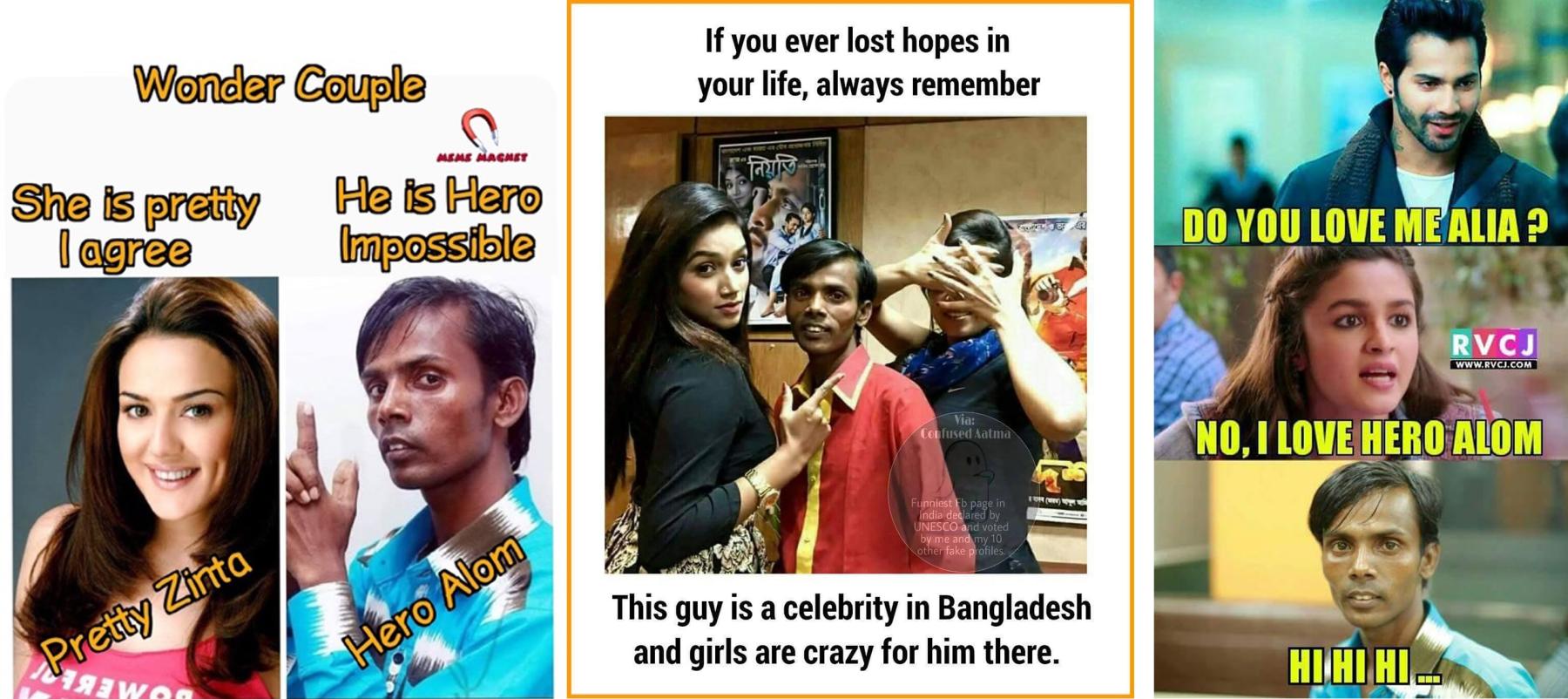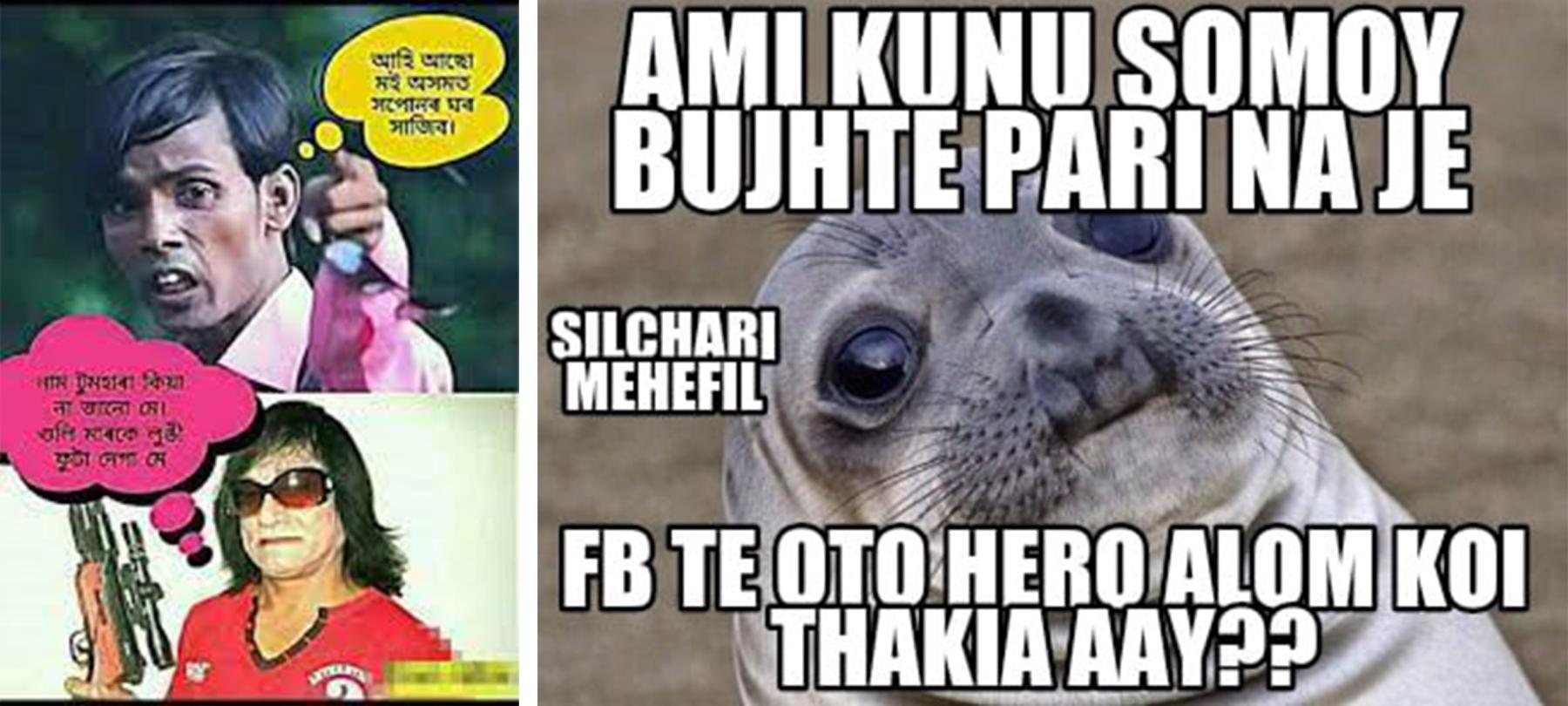Memes Beyond Borders: A Bangladeshi Meme Icon in India

Cover used for the single Hero Alom by Aman Ullah. (Source: Apple Music.)
In 2016, Indian media became fascinated with a little-known Bangladeshi actor, musician and artist known as Hero Alom. Small, ferret-like and ordinary, Alom stands out for seemingly all the wrong reasons. However, he became a sensation as a meme icon, which in this day and age is arguably a desirable social currency. Through the figure of Alom, one can consider the dichotomies of “good” and “bad” art and transnational/intertextual media. There is bad art, and then there is bad art as a meme object—communicating transnational and, specifically in Alom’s case, borderland banter. The “undesirable” figure of Hero Alom is no longer limited to just a funny meme, but is a reflection of a shared understanding of what his figure represents.

A scene from the play Hero Alom by Mahesh Ruprao Ghodeswar (2019. Image courtesy of The Theatre Times.)
Ashraful Hossen Alom, better known as Hero Alom, is a man of many talents. Born in Bogra, Bangladesh, the thirty-nine-year-old is a media personality, YouTuber, singer, actor, producer and a politician. He became an online sensation in 2015 after some of his “absurdist” music videos went viral. Alom started as a chanachur wala (spicy snack mix seller), then moved on to selling CDs and then also worked as a satellite television operator. He made music videos as a hobby and ultimately ended up in a Bangladeshi feature film in 2017. In India, as in other South Asian countries including Bangladesh, Alom was trolled extensively and became active meme fodder. The measure of his popularity could be gauged by the other peripheral media content that he generated. One such production was Mahesh Ruprao Ghodeswar’s play on Hero Alom, which was staged in Ahmedabad and Mumbai in 2019. Alom’s doggedness inspired Ghodeswar, who never even interviewed Alom for his play but instead took ample creative liberties to tell his story.

A compilation of memes around Alom. (Images courtesy of Facebook.)
John Dyck reckons that in our appreciation of good-bad art, we acknowledge the uncertainty regarding the result of our own projects. He also credits the bizarreness often associated with such works as being rooted in artistic failure, which in this case refers to failed artistic intention. At the crux of good-bad art is the tension between the “artwork’s intended effect and its actual effect.” Asok Pillai on his paean to such good-bad artists in India, calls them “nonconformist oddities… Their ignorance is their asset, their artlessness their art.”

The meme on the right is on a popular macro meme template that was uploaded to the Facebook meme collective called Silchari Mehefil. It is in the Sylheti dialect. Silchar is the second largest city and the headquarters of the Cachar district of Assam. Bengali is one of the official languages of the district, where the Sylheti dialect is majorly spoken. The translation: I do not understand how does Facebook become a repository of Hero Alom memes?? (Image courtesy of Facebook.)
The Hero Alom memes became quite popular in Assam through cultural and linguistic affinity and access, propelling transborder exchange of such mundane, mostly social and mobile media-based content. It opens up the scope for subversive possibilities in imagining territories through the notions of marginalities, digital media and shared affinities. Thus, alternative ways of communicating the past emerge, a collective comeback lying beyond the scope of the broader political dialogue and acting as an informal extension of borderland banter. In Assam, the meme has been mostly acknowledged as a vehicle for hate speech. Hero Alom as a meme icon in the context of India, particularly Assam, however, compels us to reconsider what he embodies. The Assam-Bangladesh relationship is fraught with anxieties dating back to colonial times and recurring fears around immigration, refugees and the dominance of the alien figure. Alom, as that irrelevant figure who tries to be a hero, is laughed at and stands in as an apt allegory for the alien and unwelcome Bangladeshis. That is the unstable entity of Alom as a meme. But is he just the “undesirable” Bangladeshi across the border? Is he still relevant and relatable because of the cultural closeness? His failure? His tenacity? Or is he the perfect artless meme who makes for a funny repartee?

Alom’s viral memes across other formats within the larger meme-ified format. (Images courtesy of Facebook.)
To learn more about internet culture in Assam, revisit Sagorika Singha’s essays on viral rap music in the wake of the Citizenship Amendment Act and the use of YouTube as a platform for enabling community empowerment through technical proficiency.
To learn more about digital images as currency in social media, revisit Anisha Baid’s essays on the implications of digital images for photography and on questions of authorship and dispersion. Also read her essay explaining the implications of Hito Steyerl’s “In Defense of the Poor Image.”




